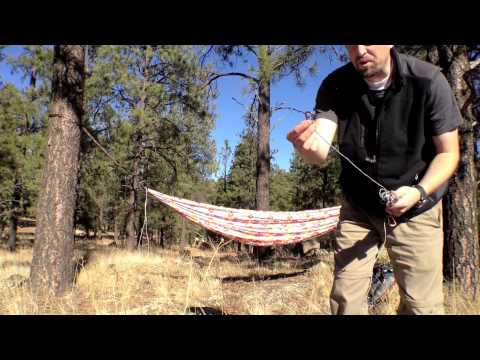Here are two quick video segments demonstrating continuous ridge lines with a tarp. The first video is a live example of what I illustrated in my book, and elsewhere, using two carabiners. The second video is a new method that I really like that uses one DutchWare Dutch Hook and one DutchWare Tarp Flyz (or Stingerz). Both methods link the ridge line into a sort of figure-8 loop that allows the tarp to slide back and forth easily so it can be centered over your hammock.
Read more: Knots vs. Hardware
I have illustrated several ways to tie up a tarp using hardware or no hardware and you’re probably wondering, “but which is the best way?” or “why not stick with just one?” For me, I enjoy having these different methods in my tool box depending on the situation. The no knot methods are important in case I’m left in a situation where that’s all I’ve got to work with. I really like the simple Dutch Hook/Tarp Flyz (or Stingers) method illustrated below because it is lightweight and the Dutch Flyz provides that mechanical advantage (similar to a Trucker’s Hitch knot) to tension the tarp close to the ridgline. I’ve found that Prusik knots tend to jam or get stuck on the line and can be difficult to tighten or loosen (especially when it gets cold).
Enjoy!








Leave a Reply